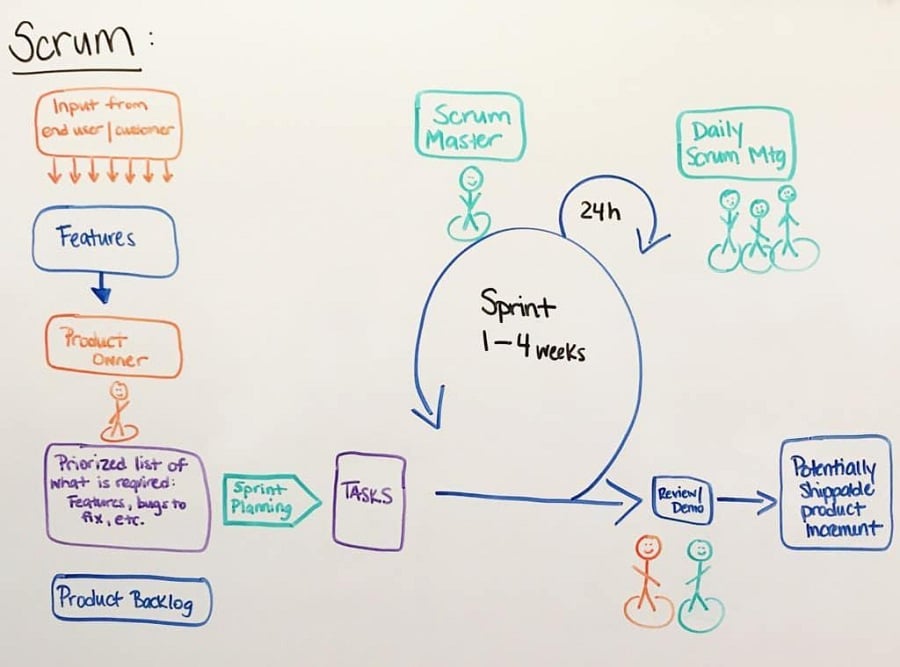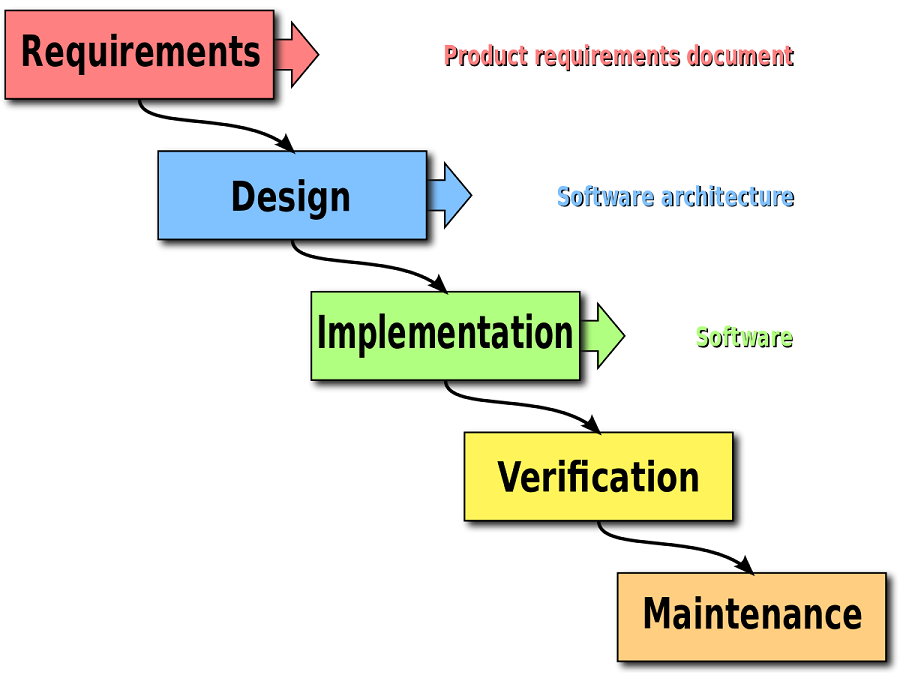What are the Different Project Management Methodologies?
If you own a business or are a project manager in any organization, you might already know the importance of choosing the right project management methodology. This is a topic that gets a lot of attention inside the businesses. If you have never heard of project management methodology, it is basically a way of organizing a project involving software development.
Basically, software development project management has two prominent methodologies – Waterfall and Agile. While the Waterfall methodology follows a traditional approach, the Agile methodology is a more modern approach, which is often implemented using Scrum.
Both of these methodologies are usable methodologies, with each of them having strengths and weaknesses of their own. Therefore, it is essential that you choose the right project management methodology that can cater to your needs.
Waterfall methodology
Now that you know that there are two project management methodologies, and the Waterfall methodology is the traditional one, you may ask why Waterfall? Well, to answer that, Waterfall methodology has been the conventional solution used by project managers for a long time. The methodology works in a sequence as follows:
- Gather the requirements and document them
- Design as per the requirement
- Code and unit test
- Conduct system testing
- Conduct user acceptance testing
- Find and fix the issues
- Deliver the finished project
Since it is a traditional methodology and many businesses in the past have used it, its requirements are static. Product owners knew what they wanted and where the boundaries had been laid out. The engineering teams were eloquent in defining the closed scope and the defined requirements and were actively engaged in the process-centric improvisation and implementation of the frozen requirements.
However, with the passage of time and increase in competition scenarios changing, boundaries vanished and scope began to flow out like never before. Product owners could not sleep because sequential project execution landed them nowhere. They passed the stress onto the engineers and testers, concerned about the changing ecosystem in the midway of development of a project.
There is no such thing as closed scope or fully defined requirements in today’s broader digital ecosystem. It is practically impossible to design and define a system fully and assume it will do all the needed work. Not only competitors but also customer segments know what should satisfy their needs in terms of computation, simplicity, efficiency, ease of use, and perfection.
This was the stage where the old Waterfall idea began to stumble over the complexity of broadness of data and depth of computation. A solution to the closed, sequential and process-based Waterfall approach became a new iterative, evolutionary, people-centric, and continuous delivery method, which we now call Agile.
Agile methodology
Agile, as mentioned earlier, is an iterative team-based approach to project development. Here, neither process nor plans dictate the progress of software projects. Rather, self-formed and motivated teams worked for delivery without waiting for changing requirements. It basically aims to deliver an application in functional components within lesser time.
Unlike the Waterfall methodology, Agile tasks are time-boxed into phases called “sprints.” Each of these sprints has designated time periods with a list of deliverables at the end of that time period. The deliverables are planned at the start of a sprint and are prioritized by the business value as determined by the customers.
With the Agile method the product owner, engineering team, and testers are no longer separate entities within the model. Together they form a team–confident, mutually respectful, and collaborating. Without waiting for requirements, the team starts the sprints, the Agile iteration sequences, with what they have at hand. Available requirements become product backlog and a subset of them that constitutes a partial but working product is moved onto the sprint backlog and the development is done after a brief sprint planning.
Delivery is made for the selected requirements and the team conducts a self-retrospection to evaluate the good and bad, only for them to correct themselves without external interference. The team is responsible and motivated under this Agile principle. They learn lessons from the past iterations and then start the next iteration with the next set of requirements, for rapid and continuous delivery.
In its essence, Agile methodologies eliminate stress, bottlenecks, underperformance, malformed and outdated requirements, release apprehensions, and so on. The product never saturates nor ceases, but evolves continuously. For the product owner, it is a continuous enhancement and new hope, while for customers the product goes through adaption and evolution that accepts requirements from them to be more mature with time.
Here are the advantages of the Agile methodology:- The customer has the opportunity to see the work being delivered and make changes where needed in the development project.
- It is a more user-focused approach.
- It is transparent.
- The delivery time is quick and the risk involved is much less.
Conclusion
There you go! These are the two project management methodologies that are being used by businesses. While both of them have their own advantages and disadvantages, the Agile methodology seems to have an edge on the Waterfall methodology. This is the reason why most of the businesses and software development project managers have switched to the Agile processes.
The rapid change to Agile methodologies has created a plethora of opportunities for professionals who are well versed with its techniques. It also has created interest among project managers to get certifications in Agile. There are many ways to obtain Agile certification. However, the best way of doing it is by joining an online certification program, like Agile Scrum Master Certification. This will not only help you clear the certification exam, but will also teach you the real-time implementation of Agile methodologies.
Read Also
What are the Different Project Management Methodologies?
How to Make Business Deal for Outsourcing Agile Development
Top 3 Methods of Project Management. Scrum vs Agile vs Kanban
Don’t miss out these all-time favourites
- The best hosting for a WordPress website. Tap our link to get the best price on the market with 82% off. If HostPapa didn’t impress you check out other alternatives.
- Monthly SEO service and On-Page SEO - to increase your website organic traffic.
- Website Installation service - to get your template up and running within just 6 hours without hassle. No minute is wasted and the work is going.
- ONE Membership - to download unlimited number of WordPress themes, plugins, ppt and other products within one license. Since bigger is always better.
Get more to your email
Subscribe to our newsletter and access exclusive content and offers available only to MonsterPost subscribers.




Leave a Reply
You must be logged in to post a comment.